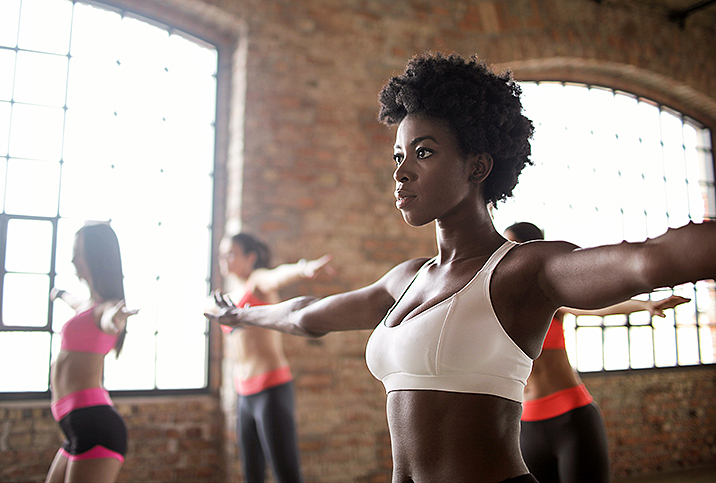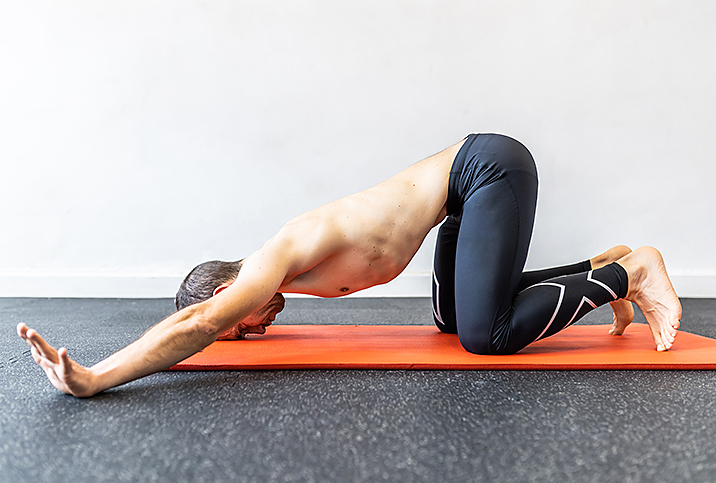The Wrong Bike Seat Could Be Dangerous For Your Vagina

Indoor cycling classes have become one of the most popular exercise activities. In the United Kingdom, such classes accounted for 13 percent of total group-exercise attendance in 2018, and it’s been estimated that the numbers could be even higher in the United States. Women dominate these classes, often comprising more than 90 percent of participants.
But could your favorite spin class be causing you some problems in your genital area?
Cycling’s benefits
Cycling is a low-impact form of cardiovascular exercise that’s easy on the joints, safe for all ages, and promotes a healthy weight, strength and stamina. It’s been associated with an almost endless list of benefits, including: improved mental health and sleep; a strengthened immune system; increased muscle mass and bone density; improved lung, brain and heart health; and reduced risk of stroke, heart attack, diabetes, arthritis and cancer.
Plus, the muscles strengthened through cycling are the ones you’ll use most during sex.
Physical effects of cycling
Unfortunately, cycling poses a few health risks. One of the most common is pudendal neuralgia, or “cycling syndrome,” a genital pain or numbness due to compression of the pudendal nerve and artery in the perineal area, which is situated between your anus and genitals.
Women who experience genital numbness are at increased risk for issues with female sexual dysfunction (FSD), such as problems with sensation, arousal and orgasm.
A 2019 study in the Journal of Sexual Medicine reported nearly 54 percent of female cyclists experienced FSD, while 58 percent also experienced genital numbness and 69 percent felt genital pain. While rare, cycling can lead to pelvic floor disorder symptoms such as stress urinary incontinence, fecal incontinence and pelvic girdle pain. Keep in mind, though, that there are concurrent pelvic floor abnormalities from causes other than cycling.
The impact on your sex life
Vaginal numbness, difficulty getting aroused or the inability to orgasm can all seriously impact your sexual wellness. These symptoms are frustrating and upsetting, and they can lead to tension or misunderstanding in a relationship.
If you experience symptoms of FSD or urinary/fecal incontinence, see a doctor right away. A doctor will be able to rule out alternative causes and suggest treatments, including help from a sex therapist.
If cycling is the culprit, your doctor will likely recommend you take a break or change your cycling routine and perhaps the equipment you’re using. You may also want to get advice from a cycling instructor or a professional who is familiar with these issues.
Be honest with partners about what’s going on so you reduce the chance of miscommunication or misunderstandings during sex. Your partner may also be an incredible source of support.
Prevention & other complications
Studies have shown that the frequency and length of cycling sessions have no correlation with genital numbness: Cyclists who experience numbness within the first hour of cycling, or who experience numbness more than 50 percent of the time, are the ones more likely to have longer-term issues. This suggests the problem is related more to how you’re cycling rather than how much.
In fact, cycling syndrome and perineal pressure can be relieved—or even prevented—with some simple changes.
Your bike seat and its positions are vital. Studies have shown that a padded seat wide enough to support you will relieve perineum pressure. If you have your own bike, look for pressure-relieving seats with a “noseless,” or horseshoe, design. Have a professional measure you—they’ll check the space between your ischial tuberosity bones, aka the “sit bones”—to give you precise personal dimensions.
If you ride a stationary bike in a spin class at a studio, ask the instructor for help to properly position your seat and handlebars. Lower your seat to a height that will keep you in a more upright position, and tilt the nose of your seat down to relieve pressure on the perineal area. Make sure your seat and handlebars are the right height for you: Handlebars set below seat height are linked to pelvic floor numbness.
While you ride, switch positions, moving between sitting and standing frequently. Take breaks to get the blood flowing again, especially if you feel numbness developing. Wear specially designed, breathable cycling shorts or pants with chamois padding. If you’re consistently having trouble, recumbent bikes offer additional relief.
Cycling is a great way to get exercise, but it’s not so great if it’s leaving you with no feeling in your precious parts. But with tweaks to your bike and a few more to your body position, you should be feeling great on your bike—and in bed—in no time.

















